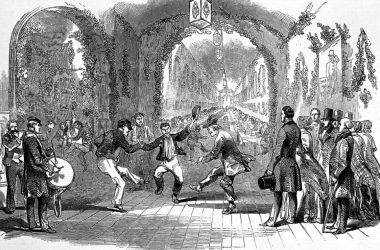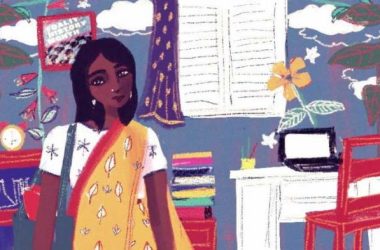The first poem in R. D. Laing’s collected works, Knots, commences with the following:
“They are playing a game. They are playing at not playing a game. If I show them I see they are, I shall break the rules and they will punish me,
I must play their game, of not seeing I see the game.”
One interpretation suggests that the ‘game’ is metaphorically referring to the pattern of interactions in a classic ‘doctor-patient’ relationship that separates the ‘mad’ from the ‘normal’. But it would be naive to assume that the ‘patient’ does not see the ‘game.’ The patient is well aware of his violation and lost autonomy. His symptoms, on the basis of which he has been labelled, tell a different story. They pose an outcry, an expression of powerlessness for which he is not to blame.
This is the premise on which Laing establishes his understanding of mental illness. Within every symptom, there seems to be a vigour for resistance which transforms its meaning from a signature of illness to an expression of ‘protest’ against an external threat.
A historical instance described in Laing’s classic book, The Divided Self: An Existential Study in Sanity and Madness exemplifies this context. Often regarded as the father of modern psychiatry, Emile Kraepelin once brought an 18-year-old catatonic patient to a class full of students and gave a lengthy description of his inability to produce useful information. Upon asking questions such as what his name was or where he was, the patient went on a rant with phrases such as, “you want to know that too?”, “I know who is being measured and is measured and shall be measured,” or “How can you be so impudent, I’m coming, I’ll show you. You don’t whore for me.”
For Kraepelin, as he explicitly mentions, these words were of no clinical use, but for Laing, they are calls of retaliation. Adding a possible interpretation to it, he writes: “Surely he is carrying on a dialogue between his own parodied version of Kraepelin and his own defiant rebelling self[…] But these things would not be ‘useful information’ to Kraepelin except as further ‘signs’ of ‘disease’.”
The rush to inspect, objectify, categorise and label an experience ultimately drives one to overlook what lies between the lines of the stories people tell us, and this has become a controversial truth of mainstream psychiatry. Amidst this rush maintained by a systematic, organized and limited nature of knowledge, one reaches an impasse; because the marked symptoms appear to be more than defining features of an illness, they represent the essence for objection.
In this article, I attempt to explore this perspective. Although this may not be new to us, it demands emphasis at such times, especially in the context of the Indian mental health system.
With a rapidly increasing number of people receiving psychiatric diagnoses from a proportionately declining number of efficient therapists, India not only suffers from a problem of quantity but also quality. Statistical gaps in healthcare promote the capitalistic use of “quick-fix” methods of healing, leaving little time and space for authentic empathy to be cultivated between two people. Eventually, it imposes the rigidity of the biomedical lens which is concomitant with the failure to understand what the person is really telling us.
Symptoms as expressions of dissent
It can be argued that the tendency to express dissent has biological roots in us. Through ailments, our bodies protest every time they experience something that disturbs the equilibrium. Every fever, cold, and headache is our body’s way of telling us that there is something wrong either within its own premises or in the outside environment and that that must be changed immediately.
Similarly, alterations in mood, panic attacks, recurring nightmares, impulses, hallucinations or dissociations, can be understood as being responses to some kind of pain inflicted on an individual. This entertains the notion that disorders of the mind eventually lie outside of the mind itself, in the external world, where these ‘signs’ appear as alarms of resistance.
During the 1960s, Laing asserted that schizophrenia was a defence mechanism adopted by an individual to live in an unlivable world. He wasn’t among the first thinkers to have taken such a stand. Sigmund Freud spent his entire professional life attempting to explain how every unexpressed feeling about a wish, a desire or intolerance of the environment may turn into a symptom. His contemporary, Karen Horney, argued that neurotic illness was a manifestation of unmet social and emotional needs, coupled with injustice and persecution.
Modern formulations of mental illness as reactions to social adversity do exist, but they often get fogged up in the rigour of medical dominance. Social models of disability radically argue that disability itself is a concept that lies outside the person, within the gaze of society. Studying classic descriptions of most problems, one may observe a common pattern that considers signs and symptoms to be an individual’s struggle to break through the binds of external influence.
Anxiety being an inherent human condition sits at the centre of most of such problems. In its fight with trauma, the brain puts constant efforts to escape its exposure through dissociation— be it of memory, environment or identity. Obsessions and compulsions carry strong cultural and religious influences. The symptoms of borderline personality disorder are often discussed as having evolved out of an emotionally invalid environment coupled with hostility and so on and so forth.
Anti-establishment healing in India
Socioeconomic adversities are precursors to mental health problems and in India, social inequalities and their contribution to mental ill-health extend to an intersectional model of class, caste, gender, sexuality and economic factors. Witnessing the unbending ways in which mental health is perceived in the country, the proposed view seems far-fetched but not all hope is lost.
“Most of the people I work with respond very well to the healing process when I relate to them, and a part of that relating is to look at their so-called symptoms as cries for help,” says Shilpi Banerjee, a therapist based in Gurgaon. She adds, “Every anger, outburst, cry is a response against the absolute helplessness the person felt living in an environment that is not conducive to their being, but kept it locked in.”
For Banerjee, the discourse of language is in control of the labels we use and if we let go of that control, to see the person existing as a whole, the labels become meaningless. “Underneath all these words that we use such as autism, dissociation or hallucination, it is the suffering that matters and more so is the meaning of that suffering,” Banerjee added.
Kripi Malviya, a psychotherapist and the founder of TATVA, an emotional wellbeing organization based in Delhi, Goa and Bengaluru, uses a humanistic-existential approach that defies the dominant viewpoint.
Malviya shared, “We work using a holistic approach that views individuals as whole human beings and not someone limited to their “impairments”. There is an intentional and important departure from viewing and propagating the idea that people’s experiences are “symptoms” that need to be “fixed” towards responses and patterns that we need to be made aware of and understood.”
How this attitude is incorporated into practice is a matter of how a therapist recognises and adjusts their ways of working, keeping in mind the power dynamics with the client. Malviya explains, “Words and paradigms like “patients” and “treatment” are avoided — the significance of this lies in allowing and facilitating people to see themselves as self-directing and holding the power to impact their lives. Where coping is understood as pathology, the internalised powerlessness requires an address. This has given rise to longer, sustained, engaging and evolving alliances with almost everyone we work with.”


